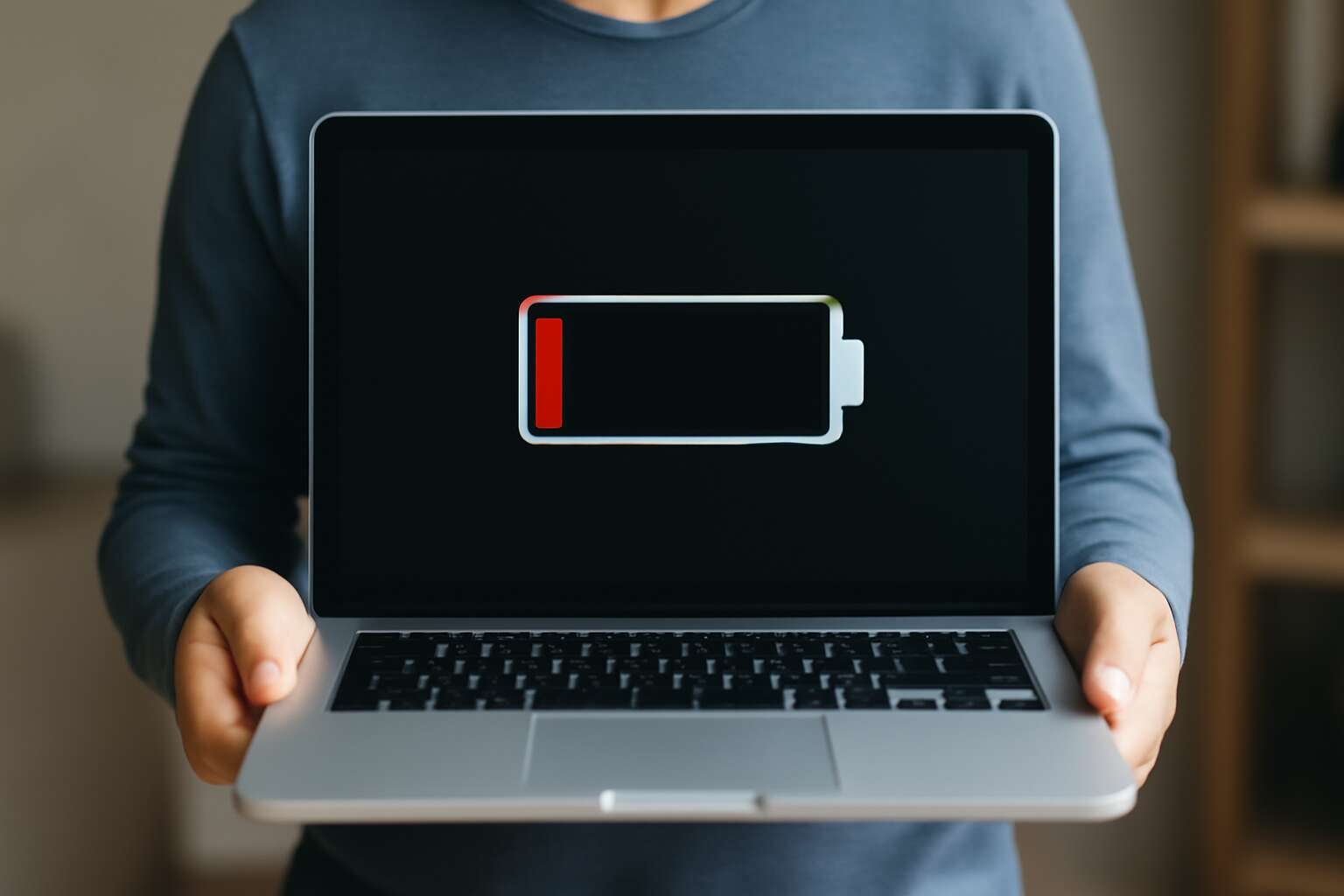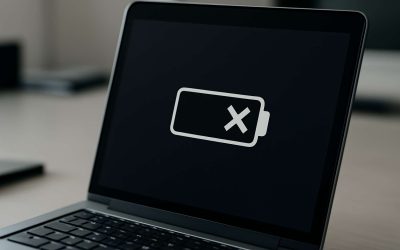Understanding Laptop Battery Health
What Is Laptop Battery Health and Why It Matters
Understanding laptop battery health is crucial in today’s tech-driven world, where a sudden dead battery can halt productivity in its tracks. Your laptop’s battery isn’t just a power source; it’s a vital component that influences your device’s overall performance and longevity. When you wonder how to check if your laptop battery is dead, recognizing the signs of declining health becomes essential. A degraded battery can lead to unexpected shutdowns, reduced runtime, and even hardware damage over time.
Knowing the true condition of your battery helps you decide whether it needs replacement or if a simple calibration can restore its efficiency. Battery health isn’t static; it deteriorates with repeated charge cycles and age. To assess this, some basic steps include examining the battery report generated by your device’s operating system. For instance, on Windows, you can generate a battery report that provides insights into its capacity relative to when it was new. Understanding these metrics makes it easier to answer the question: how to check if your laptop battery is dead. Regular checks can save you from unexpected failures and extend your device’s lifespan.
Signs Indicating a Failing Battery
Spotting the warning signs of a failing laptop battery can feel like uncovering a hidden relic—subtle yet revealing. One of the most common indicators is a sudden drop in runtime, where your device drains faster than usual, leaving you stranded mid-task. Another clue is inconsistent charging behavior: the battery percentage flickers or refuses to hold a charge, hinting at underlying issues.
If your laptop exhibits these signs, it’s time to delve deeper. Keep an eye out for unusual heat emissions or swelling, which signal that the battery’s internal chemistry is compromised. To truly understand how to check if your laptop battery is dead, examining the battery report generated by your operating system can be a game-changer. This report often highlights capacity loss and cycle count, vital clues in assessing battery health.
- Sudden power loss or unexpected shutdowns.
- Significant reduction in battery life.
- Inability to charge beyond a certain percentage.
- Physical signs like swelling or overheating.
Recognizing these signs early can save your device from further damage and extend its lifespan. Whether it’s a minor calibration or a full replacement, understanding how to check if your laptop battery is dead empowers you to keep your device performing at its peak.
Preliminary Checks Before Testing Your Laptop Battery
Inspect the Physical Condition of Your Battery
Before diving into technical diagnostics, a keen eye on the physical condition of your laptop battery can reveal telling signs of its demise. Often, the most overlooked clues are visible right at the surface — swelling, cracks, or corrosion around the edges are telltale indicators that the battery has seen better days. These physical anomalies are more than cosmetic flaws; they signal potential safety hazards and a decline in performance. Recognizing these early warning signs can save you from sudden shutdowns and data loss, making it essential to perform a thorough visual inspection.
To facilitate this process, consider a quick checklist: examine the battery for any bulging, discolouration, or leakage. If your laptop’s battery is removable, gently take it out to inspect its underside and edges. For built-in batteries, look for abnormal gaps between the battery and the laptop casing. Identifying these physical cues is a first step in understanding how to check if your laptop battery is dead, especially when visual clues are your only initial guide. Remember, sometimes the most straightforward observations can provide profound insights into the health of your device.
Check Power Settings and Battery Usage
Understanding the true state of your laptop’s endurance begins not just with the hardware but with the subtle clues hiding within your system’s settings. Before you dive into more technical diagnostics, it’s wise to perform preliminary checks—starting with your power settings and battery usage. These are windows into your laptop’s energy reservoir, revealing whether it’s struggling to sustain a charge or simply misreporting its status.
Access your system’s power management interface to see if the battery report indicates a significant decrease in capacity. Monitoring battery usage over time can also expose unusual patterns—like rapid drain during minimal tasks—that hint at a deeper issue. When in doubt, consider running a built-in diagnostic tool, which often offers insights into whether your battery truly is dead or just misbehaving.
To streamline your assessment, you might find it helpful to follow an ordered approach:
- Review your current power plan settings, ensuring they are optimized for battery performance.
- Check battery usage statistics to spot abnormal consumption patterns.
- Test the system’s responsiveness to unplugging the laptop—observe if it sustains activity or immediately shuts down.
By aligning these preliminary checks with an awareness of your device’s behavior, you gain a clearer picture of whether how to check if your laptop battery is dead. Sometimes, the most profound revelations lie in these subtle, often overlooked details—an inward glance that can determine the fate of your productivity or peace of mind.
Ensure Proper Charging Equipment Is Used
Before embarking on a quest to discover how to check if your laptop battery is dead, it’s vital to ensure your charging equipment is up to the task. Using the wrong power adapter or an incompatible charger can cast a shadow over your diagnostics, making it appear as though the battery has failed when, in reality, it’s a simple power supply issue. Reliable charging gear not only safeguards your device but also guarantees accurate readings during your inspection.
Verify that your charger matches the specifications recommended by the manufacturer—voltage, amperage, and connector type are crucial. If you’re unsure, consulting your device’s manual or the manufacturer’s website can save you from unnecessary confusion. Once you’ve confirmed your charging setup is sound, you can confidently proceed to test your battery’s true condition. Remember, a stable power source is the foundation for accurate troubleshooting, ensuring you don’t mistake a faulty charger for a dead battery.
How to Test if Your Laptop Battery Is Dead
Using Built-in Battery Diagnostics Tools
In the digital symphony of our daily lives, knowing how to check if your laptop battery is dead can feel like deciphering a cryptic melody. Modern laptops often come equipped with built-in battery diagnostics tools—silent guardians that reveal the true vitality of your power source. These tools are not just technical features; they are the sentinels guarding your workflow’s harmony. When you suspect your battery’s silence signals a demise, launching this diagnostic becomes an act of self-preservation, a way to avoid the sudden drop into darkness.
To begin, access your laptop’s battery health report through system settings or dedicated diagnostic utilities—these are the window into your battery’s soul. For Windows, navigate to the command prompt and type “powercfg /batteryreport”—a simple incantation that conjures a detailed report. Mac users can click on the Apple menu, then choose “System Report,” and select “Power.” This report will shed light on the battery’s cycle count, capacity, and overall health, guiding you in understanding how to check if your laptop battery is dead. If the numbers reveal a stark decline or the report indicates “Replace Soon,” it’s time to confront the truth—your battery may have succumbed to its fate.
Checking Battery Status via Command Prompt or Terminal
Understanding how to check if your laptop battery is dead often goes beyond mere observation. Sometimes, the symptoms are subtle—your device shutting down unexpectedly, or the battery percentage fluctuating erratically. To peel back the layers of uncertainty, a direct approach involves testing the battery status via Command Prompt or Terminal. This method isn’t just technical; it’s an act of introspection, revealing whether your power source is still alive or has reached its final breath.
On Windows, the process is straightforward but powerful. Launch the Command Prompt and type “powercfg /batteryreport.” This command generates a comprehensive report detailing the battery’s cycle count, capacity, and overall health. For Mac users, the equivalent is just as revealing—click on the Apple menu, select “System Report,” then navigate to “Power.” Here, the report will display key indicators such as battery health and cycle count.
To further clarify, consider these steps:
- Open Command Prompt or Terminal.
- Input the relevant command (“powercfg /batteryreport” for Windows).
- Review the generated report for signs of decline or failure.
If the data points toward a diminished capacity or high cycle count, it’s an ironclad sign that your battery may be dead—and understanding how to check if your laptop battery is dead with precision becomes essential. This process isn’t just about diagnostics; it’s a window into the fragile balance between technology and human reliance on it. When the numbers reveal a stark decline, the question of replacement becomes inevitable—an acknowledgment of the inevitable, perhaps even a quiet acceptance of impermanence.
Using Third-Party Battery Health Apps
In the labyrinthine corridors of modern technology, understanding how to check if your laptop battery is dead can be a revelation—an act of awakening to the silent decline lurking beneath the surface. Third-party battery health apps serve as an investigative lens, peeling back the layers of wear and tear that often escape casual observation. These tools are more than mere diagnostics; they are portals into the soul of your device’s power source, revealing subtle signs of imminent failure before catastrophe strikes.
Using reputable battery health apps like BatteryInfoView, HWMonitor, or CoconutBattery grants you a granular view of your battery’s state. These applications provide detailed metrics—cycle count, current capacity versus original capacity, and overall health status—that paint a vivid picture of whether your battery is still robust or teetering on the brink of obsolescence. To harness their full potential, follow these steps:
- Download and install a trusted battery health app compatible with your device.
- Launch the application and navigate to the battery diagnostics section.
- Interpret the data—look for a significant discrepancy between maximum capacity and design capacity or a high cycle count, both telltale signs of a battery nearing its end.
When these indicators point towards deterioration, it’s an unambiguous sign—your device’s power cell might be dead or close to it. The insights gleaned from third-party apps deepen the understanding of how to check if your laptop battery is dead, transforming a vague suspicion into concrete knowledge—an essential step in maintaining the longevity and reliability of your technology. This process embodies a nuanced dance with impermanence, a quiet acknowledgment that sometimes, even the most resilient power sources reach their finale.
Interpreting Your Battery Test Results
Understanding Battery Cycle Count and Capacity
Interpreting your battery test results can feel like unveiling a hidden truth about your laptop’s vitality. When you learn how to check if your laptop battery is dead, understanding the cycle count and capacity is crucial. These metrics reveal whether your battery is nearing the end of its life or just needs a little rejuvenation. A high cycle count—say over 300—often signals that the battery has endured countless charging cycles and is likely to be less effective. Conversely, capacity percentage shows how much of the original power your battery can store. If it dips below 80%, it’s a strong sign that your battery is losing its punch.
To accurately interpret these signs, consider this: a low capacity combined with a high cycle count spells trouble. Think of it as a ghostly whisper—your battery is ghosting your device’s full potential! By understanding these indicators, you can determine how to check if your laptop battery is dead without guesswork, ensuring your device remains reliable in critical moments. Sometimes, the numbers tell a story more haunting than any horror film—your battery’s time might just be up.
Identifying Signs of a Dead or Dying Battery
When deciphering the tale told by your laptop’s battery test results, it’s akin to reading an ancient manuscript—each number and percentage whispers secrets about its vitality. A dwindling capacity below 80% often signals that your battery is losing its fiery spirit, while a high cycle count—over 300—can be a silent testament to countless charging rituals. Recognizing these signs is essential in understanding how to check if your laptop battery is dead, or merely sleepwalking toward exhaustion.
Signs of a dying battery often manifest as abrupt shutdowns, sluggish charging, or inconsistent power levels. These symptoms are like spectral echoes warning that your device’s life force is waning. It’s vital to interpret your battery test results with keen eyes, noting that a low capacity combined with a high cycle count is a harbinger of imminent failure. In such moments, the battery’s power reservoir is whispering its last — a ghostly reminder that its time may be up.
Additional Tips and Troubleshooting
Calibrating Your Laptop Battery
Sometimes, the whispers of a dying battery go unnoticed until the device’s spirit flickers and fades. When pondering how to check if your laptop battery is dead, consider the subtle clues—unexpected shutdowns, sluggish performance, or erratic charging patterns—that whisper tales of demise. Calibrating your battery can be a poetic dance of patience, revealing truths hidden beneath the surface. A well-executed calibration resets the internal sensors, giving you a clearer picture of your battery’s true vitality.
To troubleshoot effectively, keep in mind that not all symptoms are equal. If your laptop’s battery indicator stubbornly refuses to update or shows inconsistent readings, it might be time to explore calibration as a remedy. Sometimes, a simple drain and recharge cycle can breathe new life into a seemingly dead battery. Alternatively, if your device’s battery health software indicates low capacity or a high cycle count, it’s a sign that your battery may be beyond revival. Remember, understanding how to check if your laptop battery is dead involves a blend of observation and patience, each revealing the silent story of its endurance.
When to Replace Your Battery
Sometimes, it’s the quiet signals that reveal a hidden truth—your laptop’s battery may be nearing the end of its journey. When pondering how to check if your laptop battery is dead, remember that patience and keen observation are your allies. If your device suddenly shuts down without warning or struggles to hold a charge, these are telltale signs that your battery could be beyond repair. A gentle nudge towards understanding the battery’s condition often involves testing its behavior during various cycles of use.
In cases where the usual diagnostics don’t provide clarity, consider exploring additional troubleshooting methods. For example, observing how your laptop responds to different power states or monitoring battery performance over time can shed light on its health. Sometimes, a simple step like removing and reinserting the battery (if removable) can resolve minor glitches. If your efforts don’t restore confidence in your battery’s vitality, it might be time to evaluate whether your device needs a new power source altogether. Knowing when to replace your battery ensures your laptop stays reliable and ready for the next adventure!
Factors Affecting Battery Performance
Battery performance can be affected by factors beyond age. Temperature extremes, for instance, can cause rapid drain or reduced capacity. Keep your laptop in a cool, dry place to maintain optimal battery health. Additionally, background apps and processes can skew battery readings, making it harder to determine how to check if your laptop battery is dead accurately.
Sometimes, the power management settings interfere with battery testing. Adjusting these settings to default or balanced modes can provide clearer insights. Also, consider updating your device’s firmware or drivers—outdated software may cause inaccurate diagnostics, clouding the true state of your battery.
For a more thorough assessment, perform multiple charge and discharge cycles. This helps reveal inconsistencies in battery behavior. If irregularities persist, using a combination of built-in tools and third-party battery health apps can give a comprehensive picture of your battery’s condition.




0 Comments